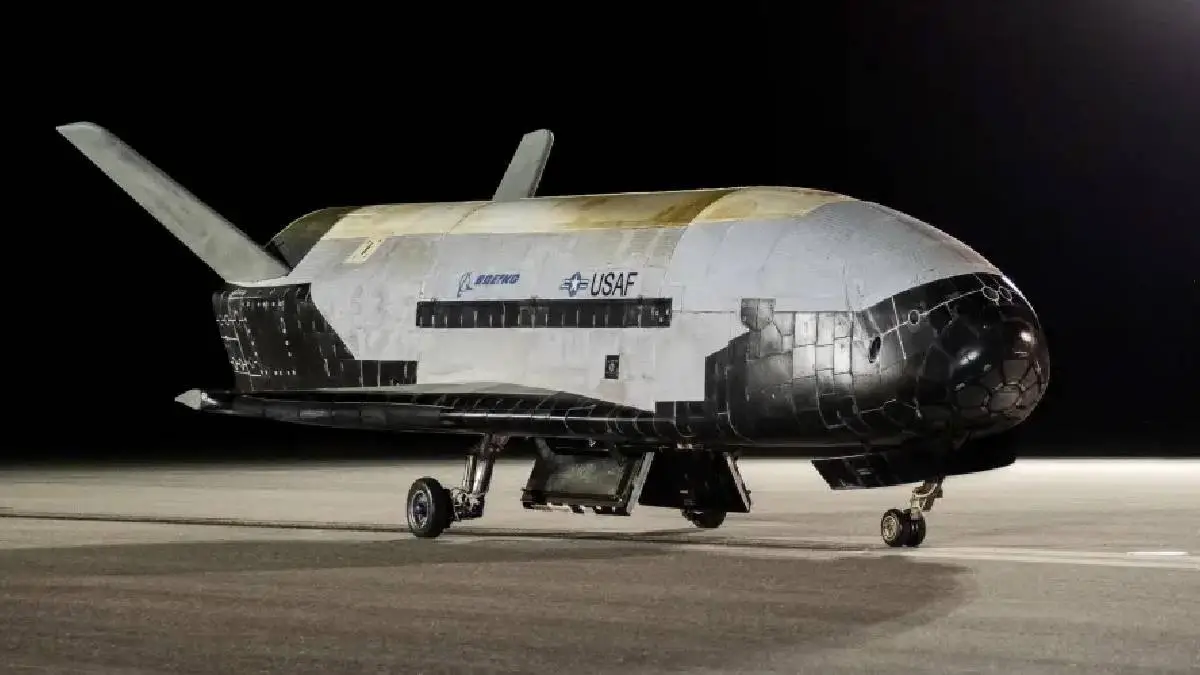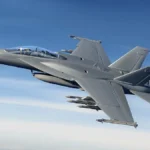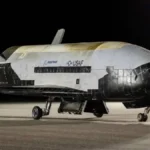The US Space Force launched the classified X-37B Orbital Test Vehicle late Thursday night, marking the spacecraft’s eighth trip into space.
Officials confirmed that the mission, named OTV-8, used the Boeing-built spacecraft for several experiments and demonstrations focused on laser communication systems and quantum inertial navigation devices.Space Systems Command reported that Thursday’s launch went as planned.
“SpaceX’s Falcon 9, working with the Space Force’s National Security Space Launch (NSSL) program, carried the USSF-36 mission into orbit on August 21,” the command announced in a release Friday. “The spacecraft, carrying the Air Force’s X-37B Orbital Test Vehicle, launched as scheduled at 11:50 p.m. Eastern Standard Time (8:50 p.m. PST) from Launch Complex 39A at NASA’s Kennedy Space Center in Florida.”
Expanding Capabilities with the X-37B
Since its first deployment in 2010, the X-37B has completed seven orbital journeys, each designed to validate and advance emerging technologies for both the Pentagon and NASA. This reusable vehicle can remain in space for years and then return to Earth ready for future flights.
The Air Force Research Laboratory and the Defense Innovation Unit will support the Space Force and NASA in this latest round of research.
During the seventh flight, which launched in 2023 and concluded earlier this year, teams studied new orbital paths, tested space domain awareness capabilities, and monitored radiation effects in orbit.
Focus of OTV-8 Experiments
For the eighth mission, Space Force teams will explore a “high-bandwidth inter-satellite laser link,” a system that enables satellites to send data to each other or to Earth much faster than conventional radio signals.
Colonel Ramsey Home, commander of Space Delta 9, highlighted the impact of quantum inertial sensing on operations. “When spacecraft navigate lunar space or operate in locations where GPS is unavailable, quantum inertial navigation provides us with precise positioning and operations,” Home explained. He added, “This capability strengthens both the 5th Space Operations Squadron and the Space Force, ensuring we remain mobile and effective even in GPS-less areas.”
U.S. Space Force Demonstrates X-37B Mission 7 Capabilities
The U.S. Space Force landed the X-37B at Vandenberg SFB, California, to highlight its rapid launch and recovery capabilities to a variety of locations. Mission 7 was the X-37B’s first launch into a highly elliptical orbit by a SpaceX Falcon Heavy rocket. While in space, the mission completed numerous tests and experiments, demonstrating the X-37B’s robust maneuverability and enhancing space domain awareness through unique technological experiments.
Mission 7’s Unprecedented Accomplishments
Chief of Space Operations General Chance Saltzman said, “Mission 7 set a new standard by demonstrating that the X-37B can adapt to and achieve experimental objectives in various orbital regimes. The successful aerobraking maneuver demonstrates the U.S. Space Force’s efforts to safely and responsibly expand innovative space missions.”
“Mission 7’s work in the new orbital environment, its innovative aerobraking, and its focus on space domain awareness tests usher in a bold new chapter for this program,” said Lt. Col. Blaine Stewart, X-37B program director. “All of these efforts are a major step toward strengthening the U.S. Space Force’s evolving mission capabilities.”
X-37B Fleet and OTV-8 Mission Goals
Timeline of Previous Missions
The fleet includes two operational X-37B vehicles. X-37B Vehicle 1, also known as OTV-8 or USSF-36, completed its fourth flight on March 7, approximately five and a half months after X-37B Vehicle 2 landed on Vandenberg’s Runway 12.
X-37B 1
- OTV-1: April 22, 2010 – December 3, 2010 (224 days)
- OTV-3: December 11, 2012 – October 17, 2014 (675 days)
- OTV-6: May 17, 2020 – November 12, 2022 (909 days)
X-37B 2
- OTV-2: March 5, 2011 – June 16, 2012 (469 days)
- OTV-4: May 20, 2015 – May 7, 2017 (718 days)
- OTV-5: September 7, 2017 – October 27, 2019 (780 days)
Demonstration of New Technology
Chief of Space Operations General Chance Saltzman said, “OTV-8 The laser communications experiment is a significant step in advancing the U.S. Space Force’s use of an extended space network within a layered and flexible architecture. It strengthens data transfer speed, reliability, flexibility, and overall resilience in satellite communications.”
“OTV-8’s quantum inertial sensor test further strengthens operational safety in space,” said Colonel Ramsey Horn, Commander of Space Delta 9. “This capability ensures precise navigation beyond Earth orbit, in lunar space, or in environments where GPS signals are not available, enabling reliable operations even without traditional GPS.”
Falcon 9 launch and landing
The Falcon 9 first stage returned to Earth on schedule and landed at Cape Canaveral Space Force Station, adjacent to Kennedy Space Center, just 8.5 minutes after liftoff. Meanwhile, the rocket’s upper stage lifted the X-37B into low-Earth orbit, where the spacecraft will perform a number of tasks, some of which are classified. The time or location of the X-37B’s deployment has not yet been announced; at the Space Force’s request, SpaceX ended its launch webcast shortly after the booster landed.
OTV-8 mission description
The Army has provided a brief description of the mission, dubbed OTV-8. It includes “next-generation technologies such as laser communications and the most advanced quantum inertial sensors ever flown in space,” according to a statement released by the Space Force on July 28.
Laser Communications Test
A July 28 release said that during OTV-8, the X-37B’s instruments will conduct laser communications tests “using a network of commercial satellites deployed in low-Earth orbit.”
The 434-day flight broke a trend of increasingly long missions. Previous flights had been steadily increasing in duration, starting with OTV-1 at 224 days and ending with OTV-6 at 908 days. The Space Force has not released the expected duration of OTV-8, so this part of the mission has been kept secret.
Space Force Demonstrates Innovation with Aerobraking
“This revolutionary and efficient maneuver demonstrates the Space Force’s drive to innovate while conducting national security missions in orbit,” said Air Force Secretary Frank Kendall.
The U.S. Space Force and the X-37B performed this dynamic aerobraking maneuver for the first time. They built on six previous missions that have proven the spacecraft’s safe performance, as well as decades of lessons learned by the scientific community from lunar and Mars exploration.
Leaders Recognize Space Force Achievement
Team Praises
Space Operations Chief Gen. Chance Saltzman praised the achievement. “This first maneuver with the X-37B stands as a significant achievement for the United States Space Force as we strengthen our expertise and readiness in this challenging field. This success reflects the hard work and determination of the entire team.”








Leave a Reply